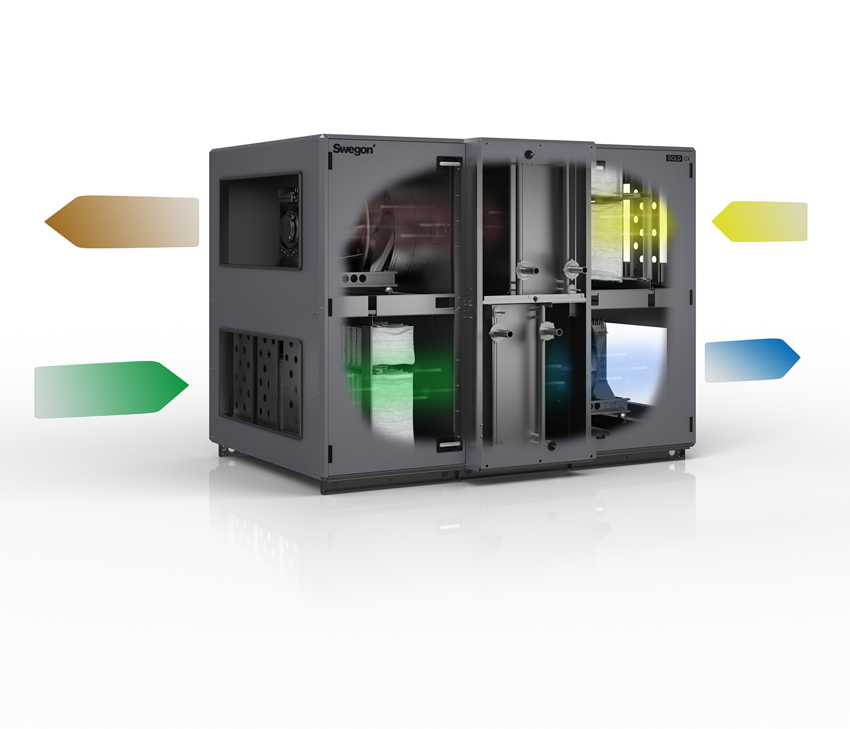Coil heat exchangers
What is the operating principle behind a coil heat exchanger? A coil heat exchanger has separate liquid coils in the supply air and the exhaust air respectively. A heat carrier is pumped around a circuit between the coils, the air heats the liquid in the extract air coil and the liquid, in turn, heats the air in the supply air coil.
A slightly lower temperature efficiency of balanced supply and exhaust air is accomplished in comparison to rotary or counterflow heat exchangers. Ideally the coil heat exchanger is used when completely separate air flows are required. They are therefore normally used in hospital environments, but also for recycling process air in industrial environments.
How does it work?
The coil heat exchanger is equipped as standard with a pipe assembly that includes a circulation pump, 3-way valve and safety equipment.
The pipe assembly’s valve continuously regulates the heat recovery rate, the liquid flow is measured and the demand-controlled circulation pump ensures the right flow rate for the best temperature efficiency. However, the temperature efficiency of balanced supply and exhaust air is slightly lower in comparison to rotary or counterflow heat exchangers.
The supply air and extract air has completely separate coils, meaning that any odours or particles in the extract air are not transferred to the supply air.
The coil heat exchanger is equipped with an extremely effective anti-frost protection that measures the temperature of the liquid in the extract air coil and the humidity in the extract air as well. Taking into account the moisture content, the minimum permitted liquid temperature without risk of freezing is calculated, and the 3-way valve ensures that this temperature is not exceeded.

Coil heat exchangers are suitable for applications where there are strict requirements around odour tranfer and hygene.Nils Spetz, Product Manager, Swegon
Broad product range
Coil heat exchangers are generally used when you want separate air passages for high-volume air flows. Depending on the specific requirements and type of application, Swegon offers different solutions.

